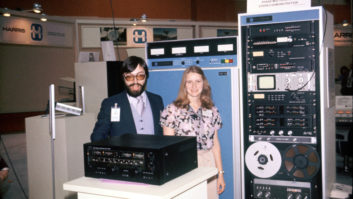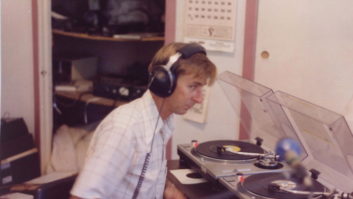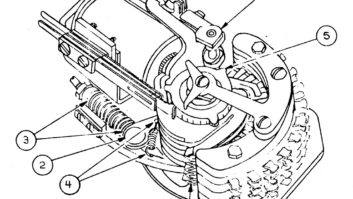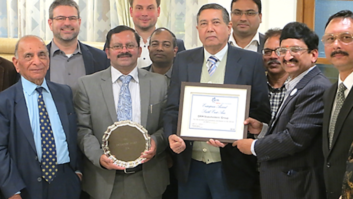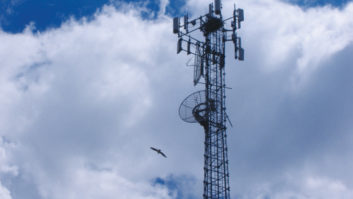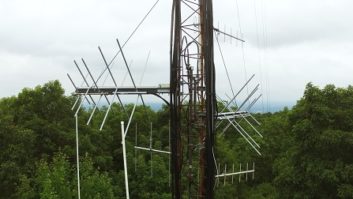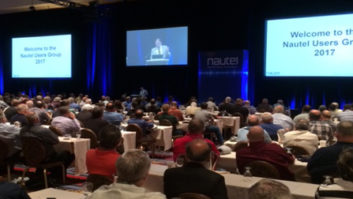The author is a consulting broadcast systems engineer.
Electricity constitutes a major part of the operating expenses of analog transmitter sites operating below 30 MHz, if not the largest. This is because the AM modulation scheme is power-inefficient by design.
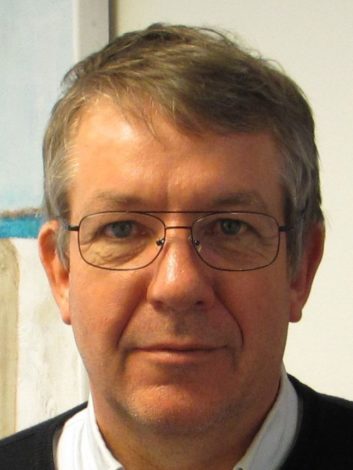
Contrary to other modulation schemes, the carrier frequency of an AM [amplitude modulation] transmitter contains no useful information, but simply suppresses reception noise. Even when the audio signal is modulated at the maximum level, only 33 percent of the total transmitter power output is allocated to the audio signal. The rest, to paraphrase the famous last words in Shakespeare’s “Hamlet,” is “silence.”
REDUCE CARRIER POWER
An obvious approach to cutting electricity costs would be to reduce the carrier when it is not needed, for example during pauses and amplitude extremes in the audio signal. This principle is well proven, and the more advanced modulation-dependent carrier level (MDLC) algorithms can yield significant power savings.
The downside to this approach is that the overall audio signal to noise-and-distortion ratio perceived by the listener may be reduced at longer distances from the transmitter site.
So how about reducing the carrier power permanently?
It not only saves electricity but also allows the use of much smaller and thus cheaper transmitters. Although this contrarian approach involves some compromise, it can prove fully acceptable for audio signals that are not already heavily “wall-of-sound” compressed, such as those of talk radio and classical music stations.
If this approach is used at the same time as replacing a legacy transmitter with state-of-the-art equipment, the effects will be threefold:
- A greatly reduced electricity bill
- A significantly smaller and cheaper transmitter
- Much lower maintenance costs
The small modern transmitter may even be pushed to give a useful range comparable to its larger legacy predecessor.
MAINTAIN SIDEBANDS
Traditional wisdom has it that lower transmitter power means shorter range and therefore smaller coverage area. However for AM-modulated transmitters, the carrier simply contributes with reception noise suppression, whereas the useful audio signal is transmitted only in the sidebands.

Compared to the legacy transmitter, a modern transmitter can be much more aggressively modulated without audible distortion, often allowing a doubling in the sideband-to-carrier power ratio.
Add a state-of-the-art digital audio AM preprocessor, and the numbers really start to speak for themselves.
LOWER COSTS
With the 60–70 percent efficiency of a typical tube legacy transmitter as compared to 90 percent of a modern transmitter, and a 4–5 dB sideband power increase from the preprocessor, this translates into three to five times reduction in electricity costs and transmitter size.
This electricity savings, a completely unmanned operation and the lower price of a small AM band transmitter operating in analog mode can result in a capital expenditure payback time of less than two years.
[Read: Does Shortwave Have a Future]
If the modern transmitter is used in a robust digital mode such as the Digital Radio Mondiale (DRM) digital standard, further power savings are possible — as a rule of thumb, the coverage area can be maintained with 7 dB less power than with AM modulation, which can give up to a further five times reduction in electricity cost.
Alternatively, it is possible to increase range and coverage by utilizing the full digital power under the original analog frequency permit (ITU Circular Letter CCRR/20).
This commentary is based on the analysis first presented by the author at the EBU Digital Radio Summit 2013. A brief summary may be found in the EBU tech-i Magazine, June 2013.
Niels Dreijer was a project manager at an AM radio station that was downsized from 300 kW to 50 kW without significantly affecting its range and coverage area, and also saw a dramatic reduction in operating expenses. He holds a BScEE Hons and an MBA from INSEAD, France. He is also webmaster for the independent digital radio website www.drmradio.dk.

